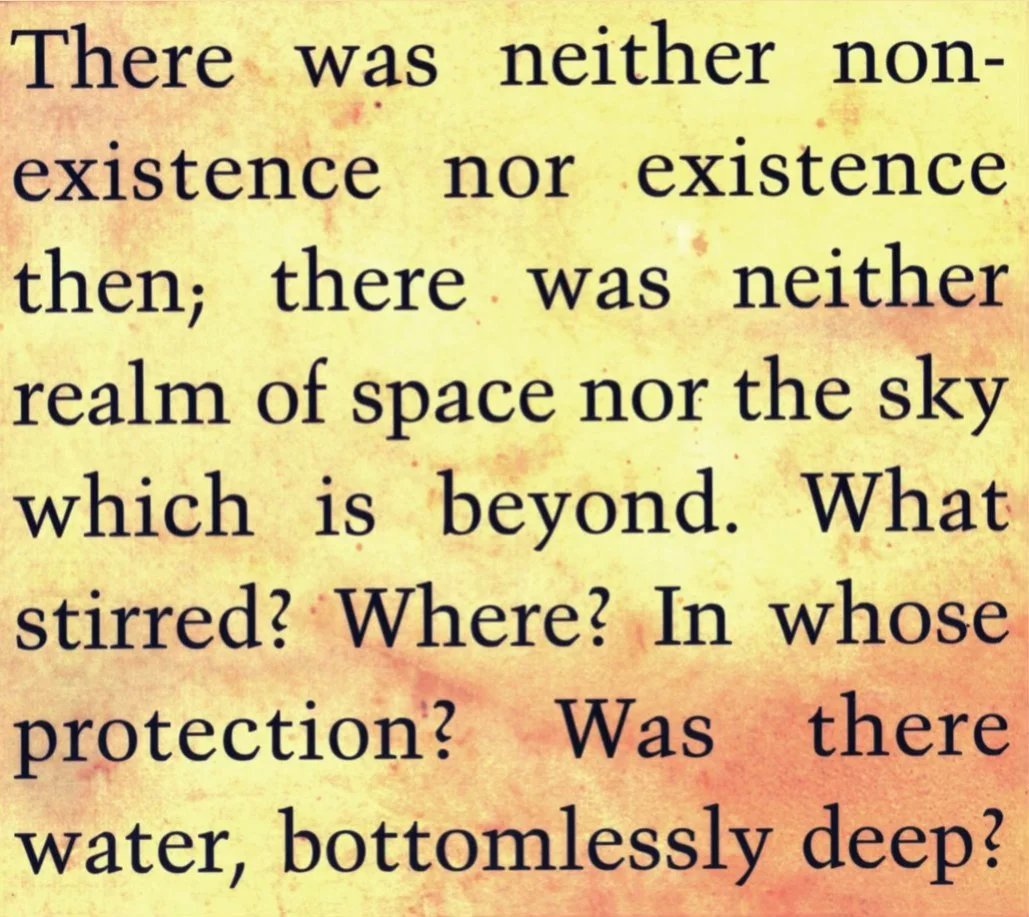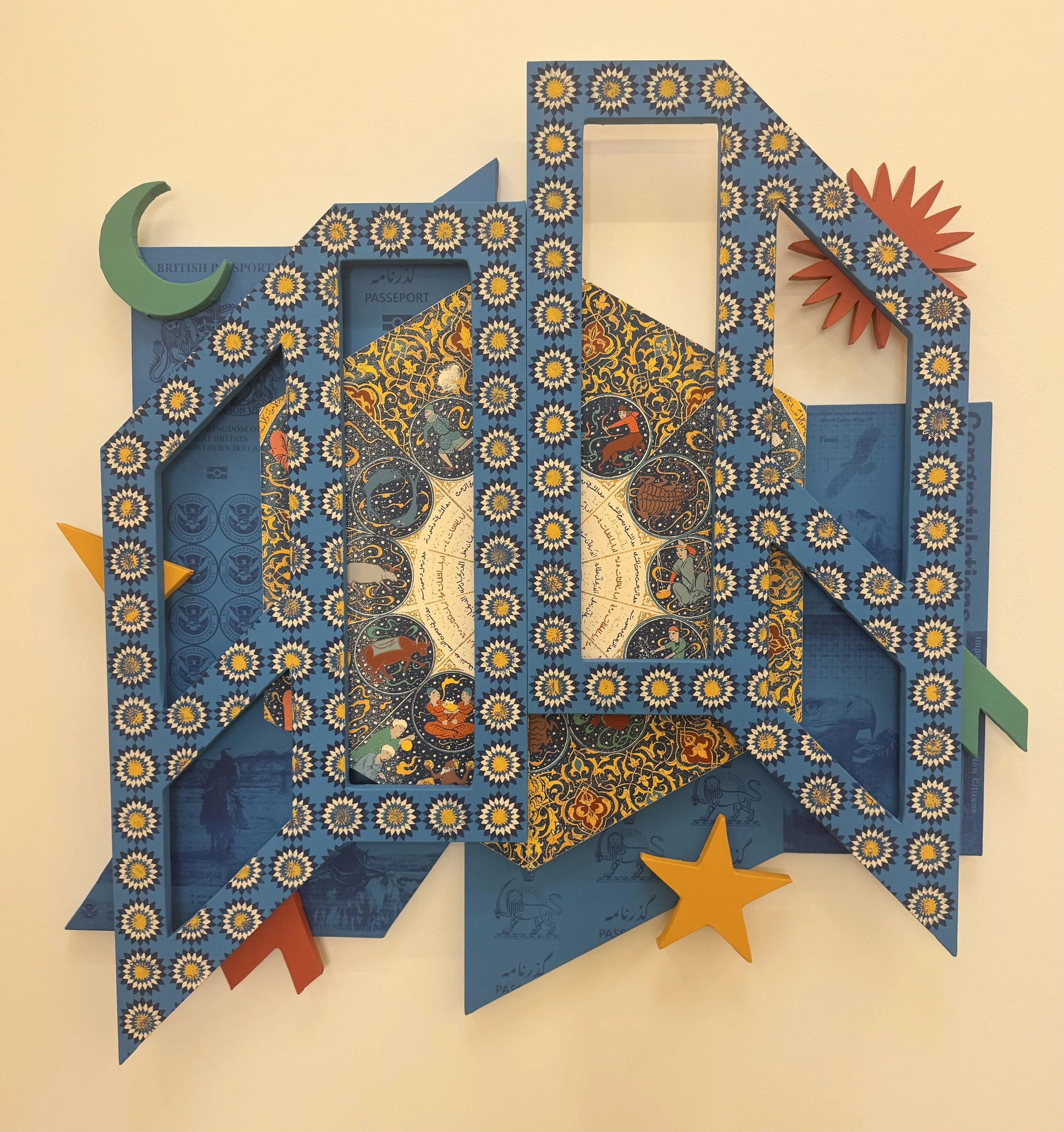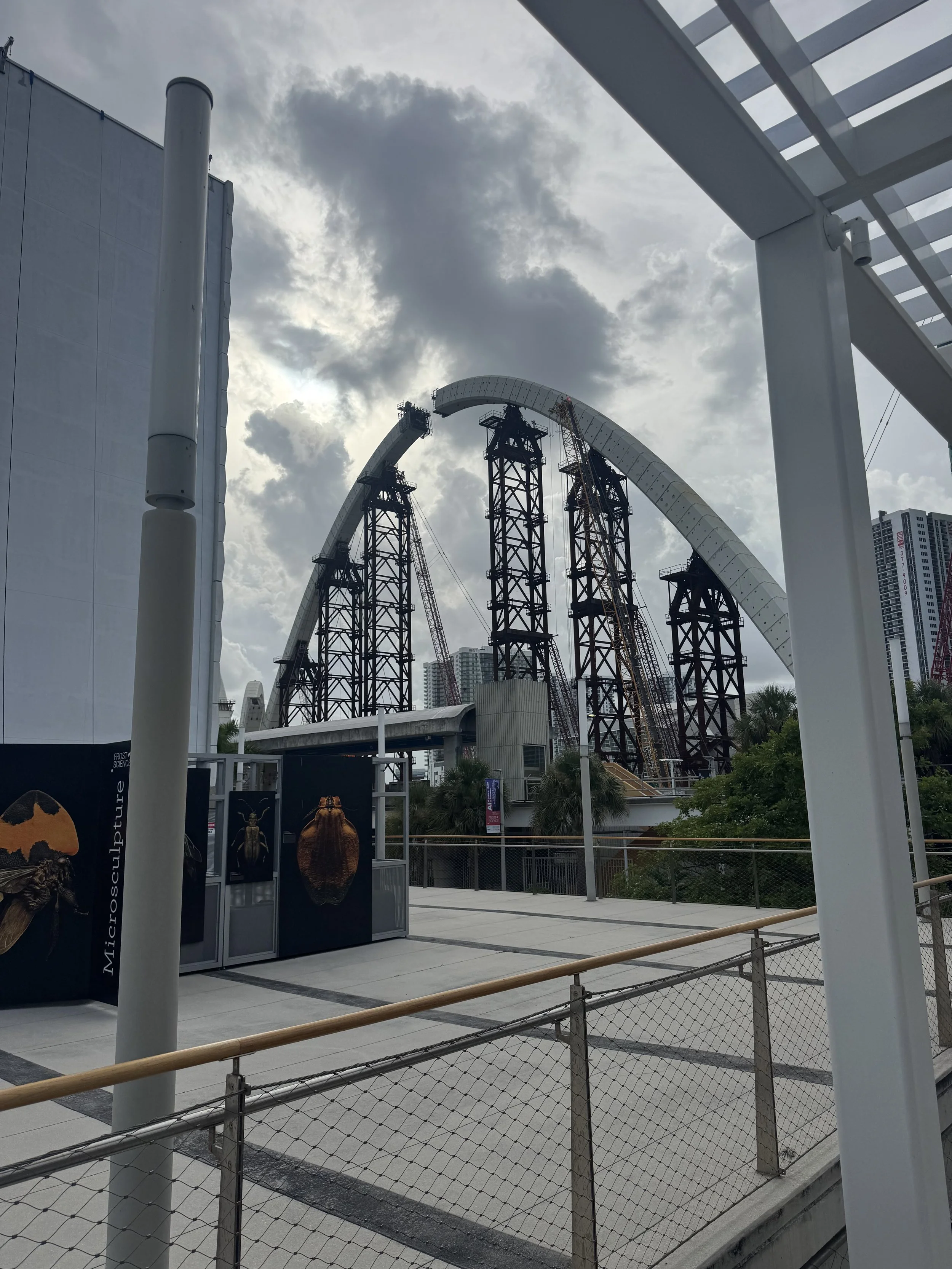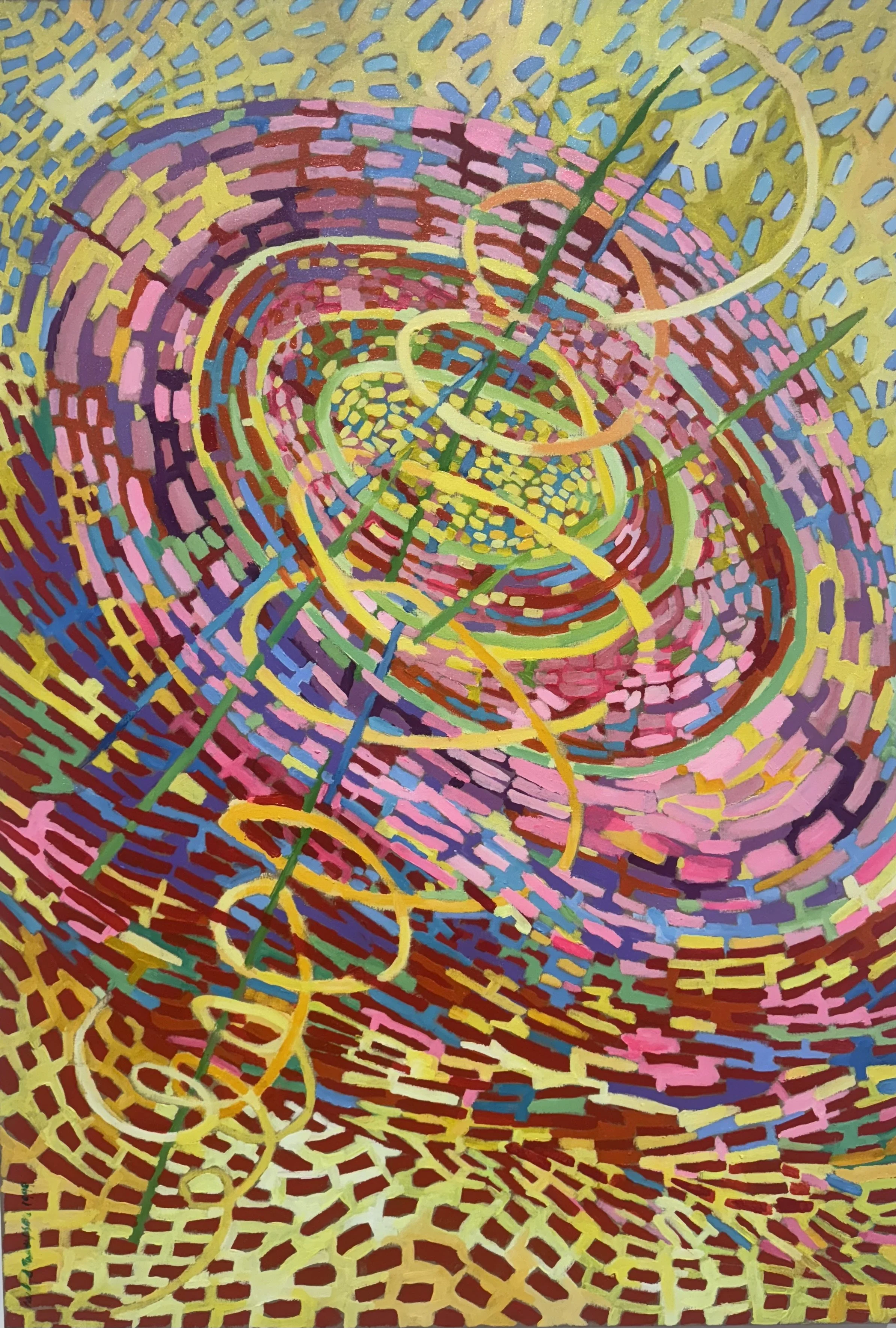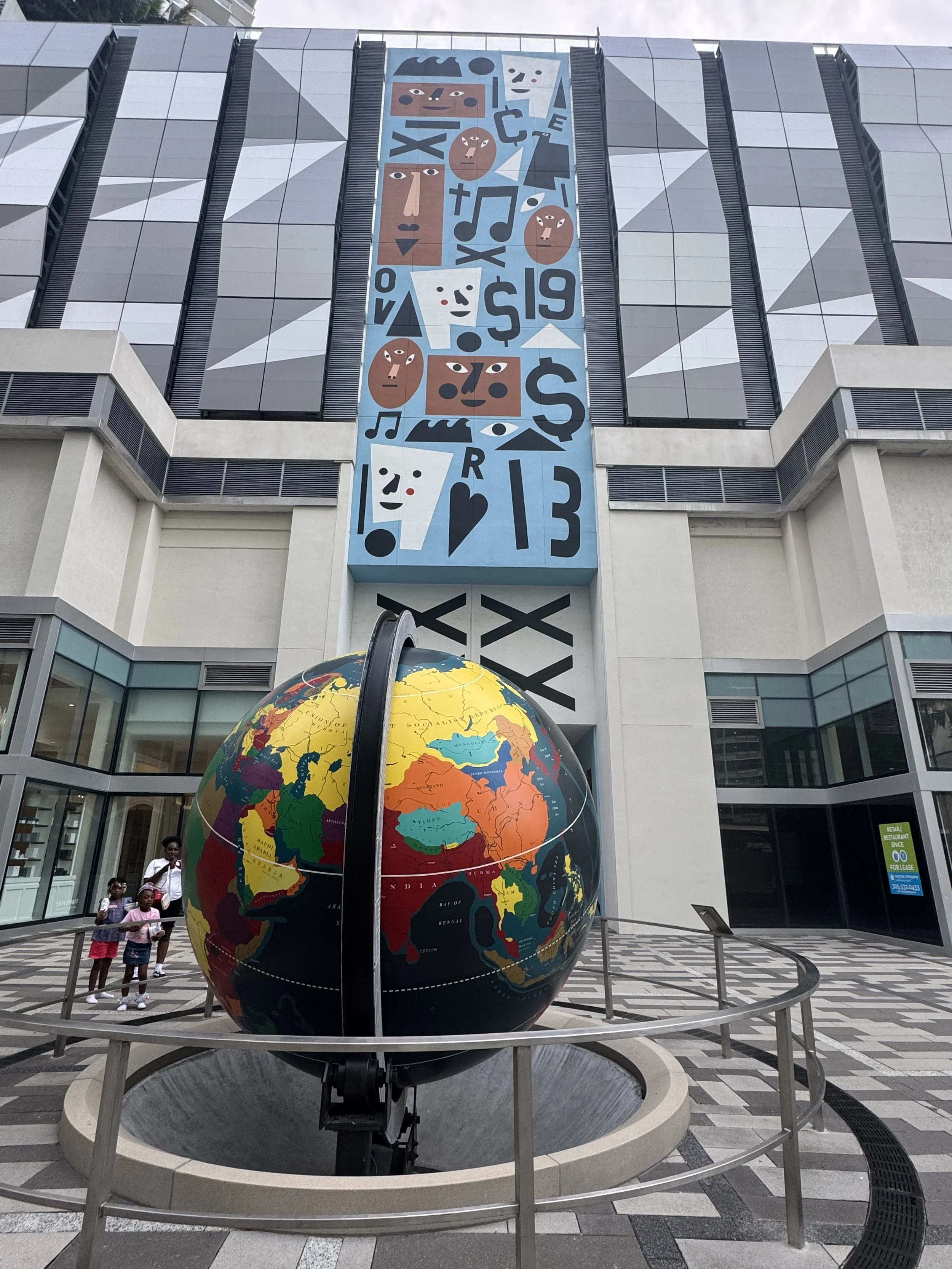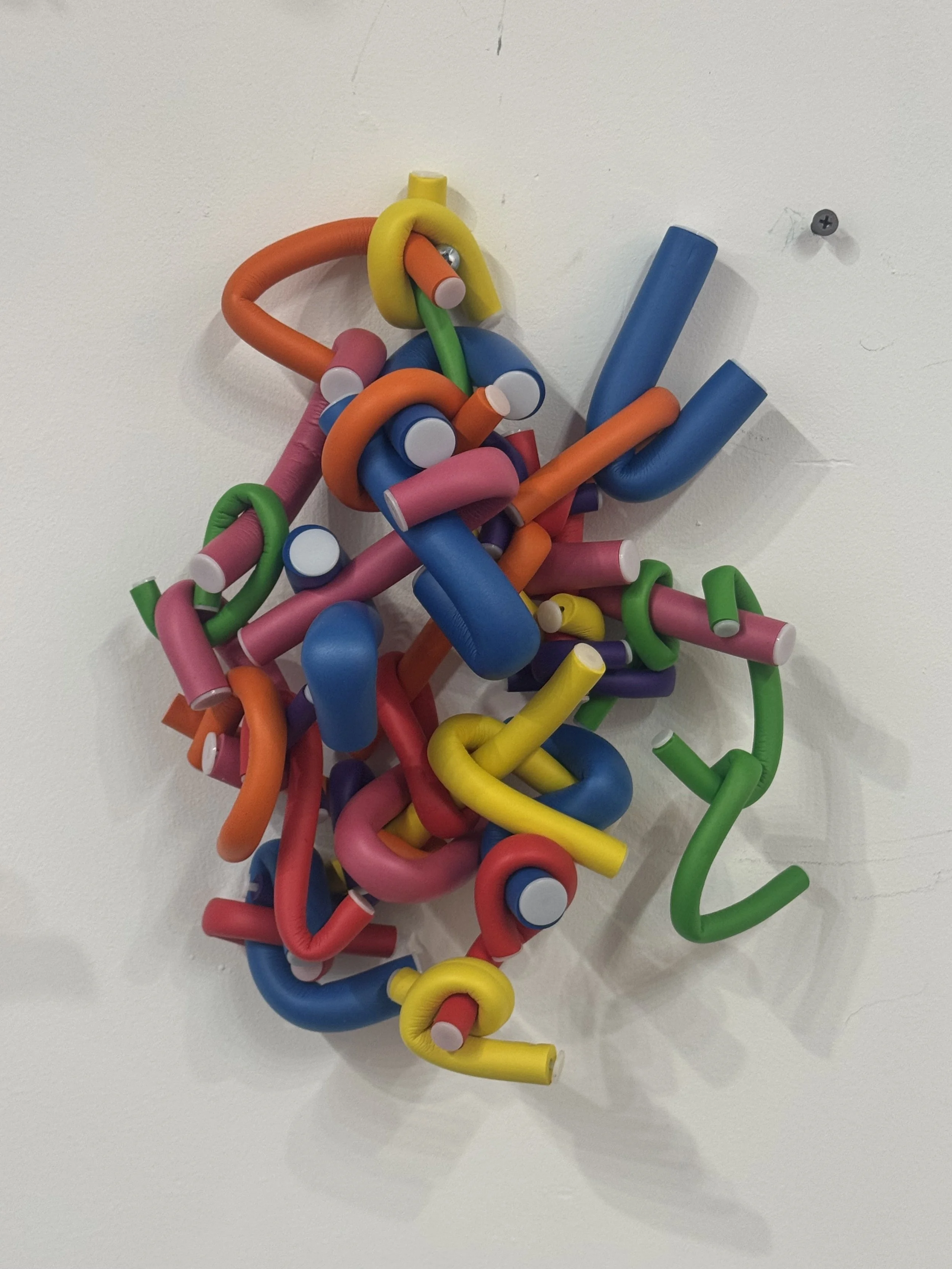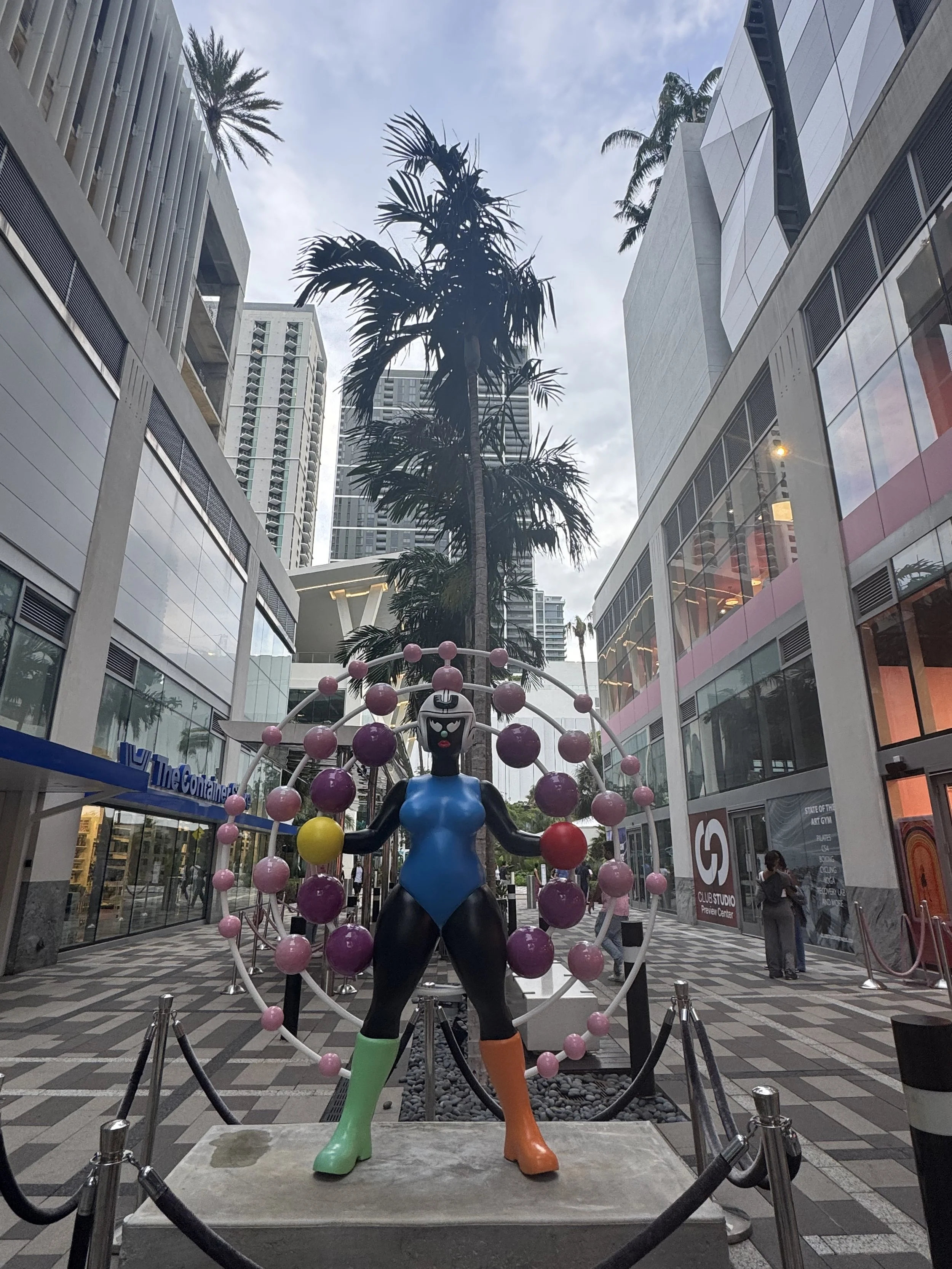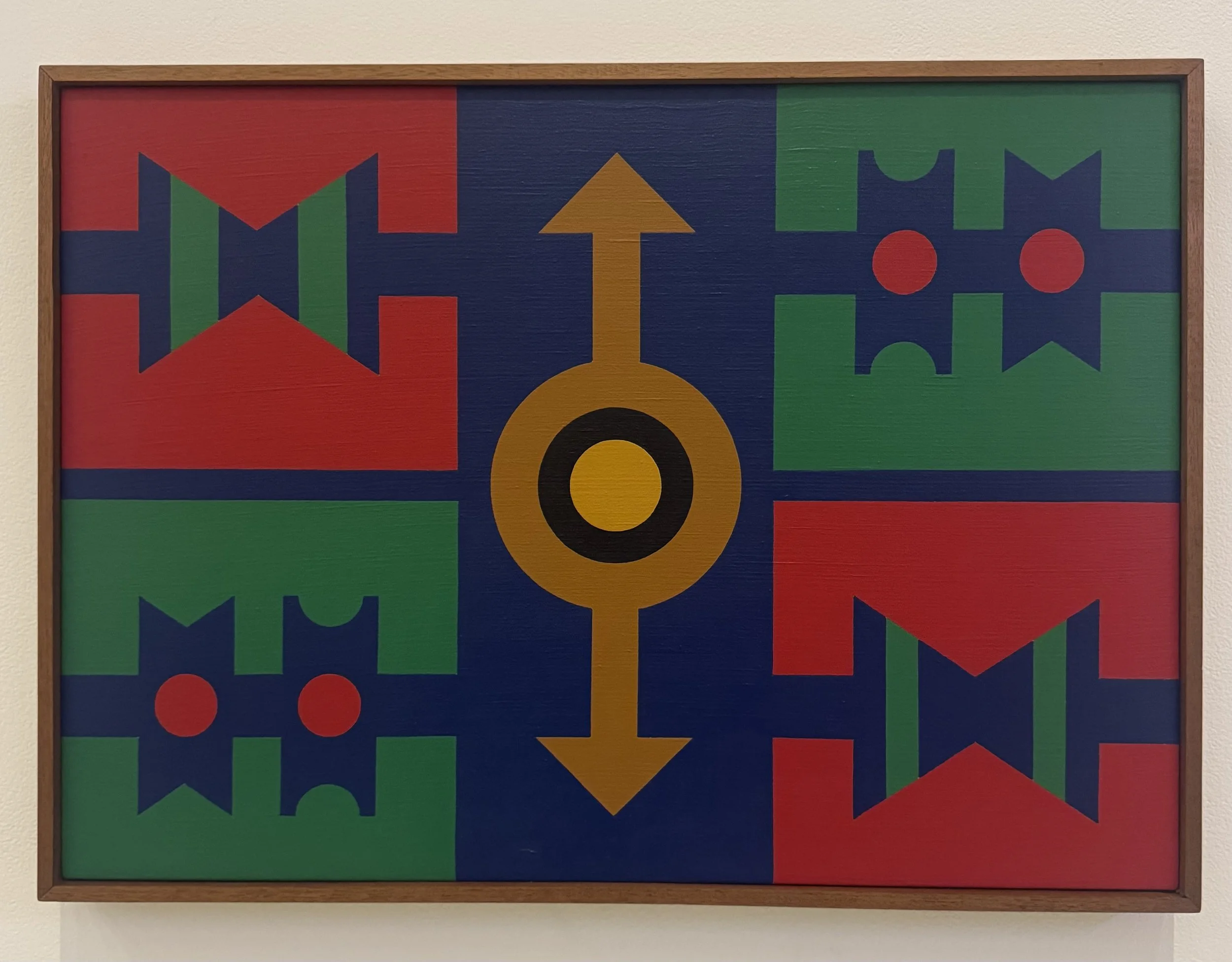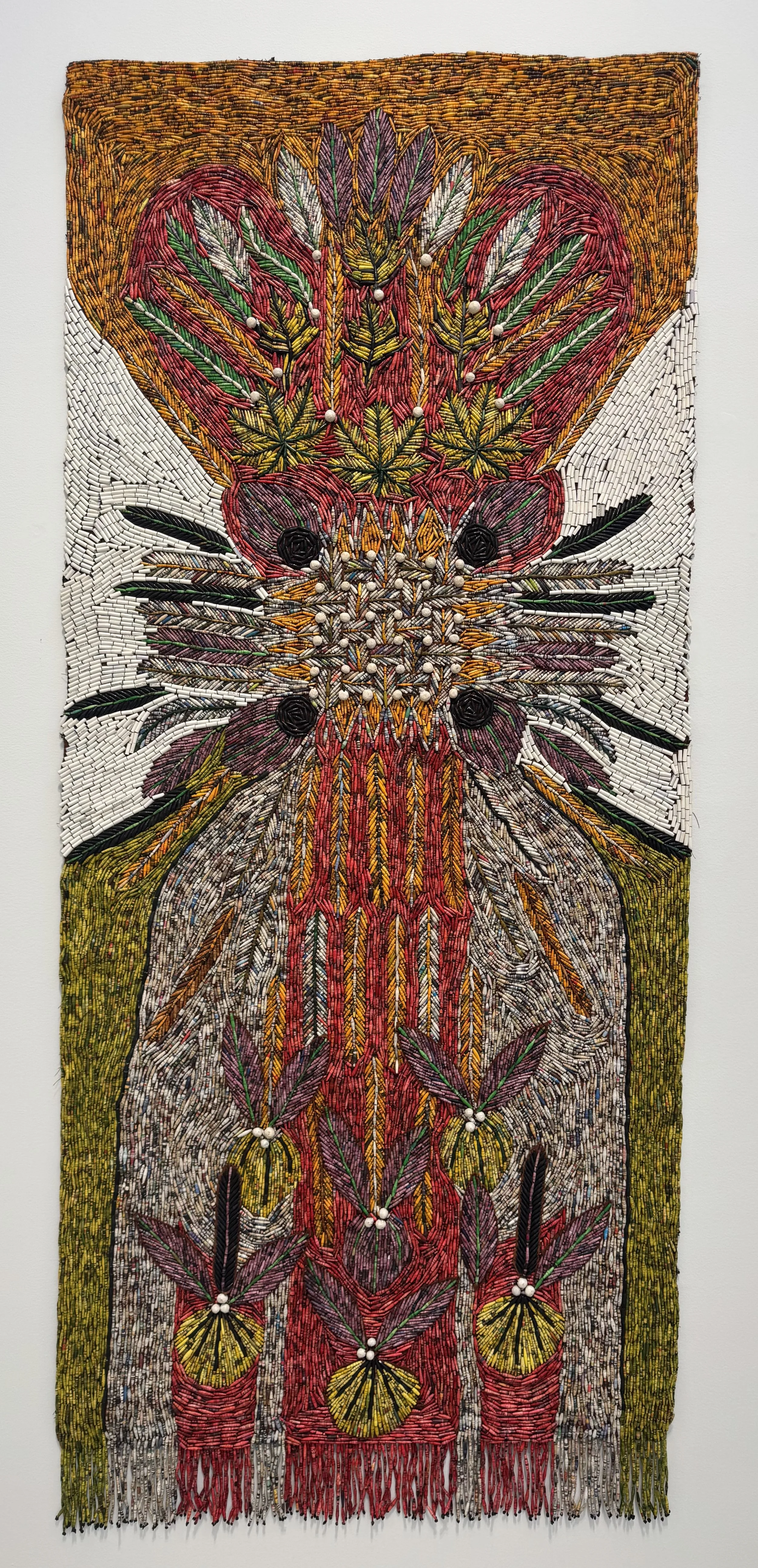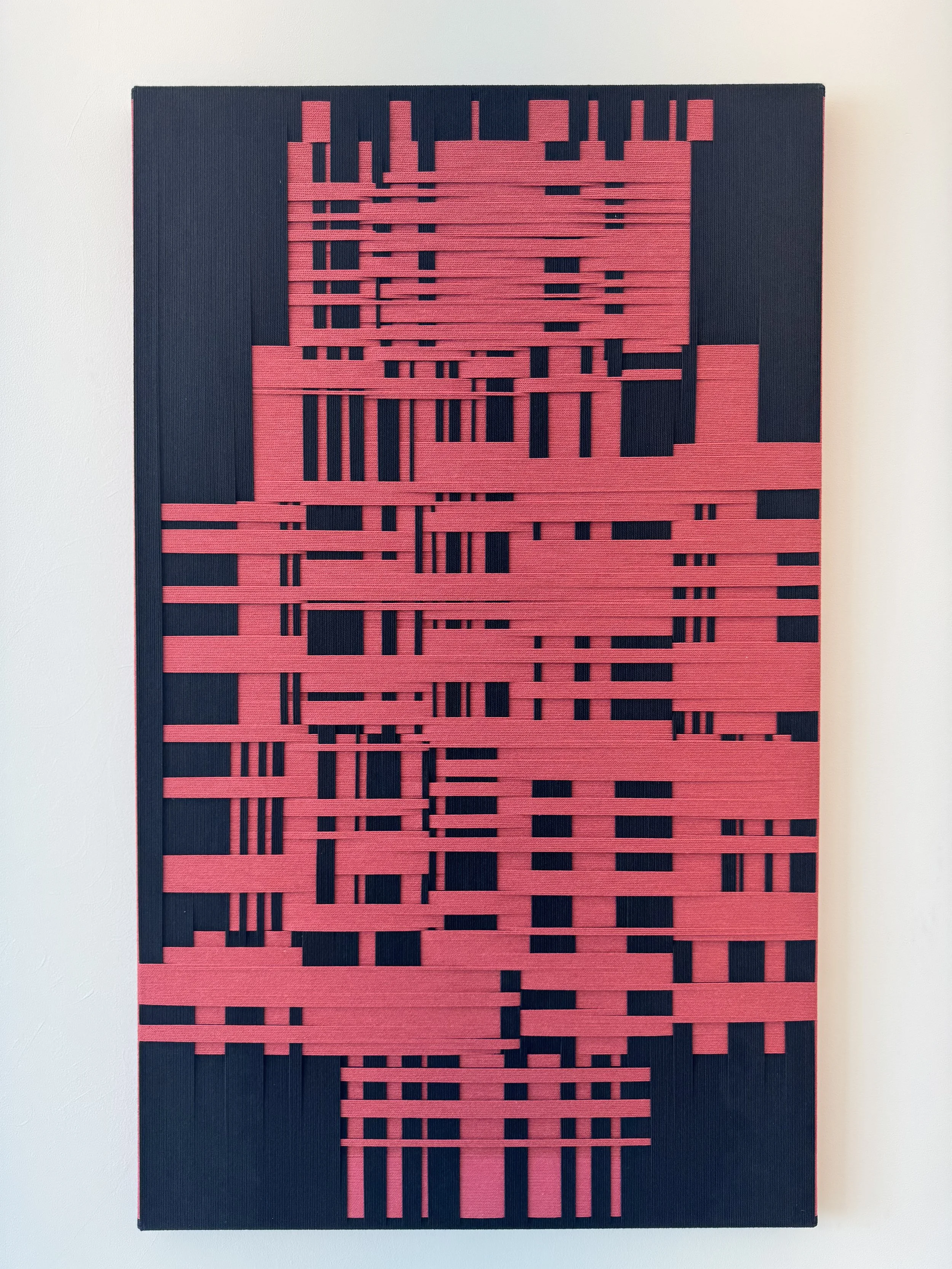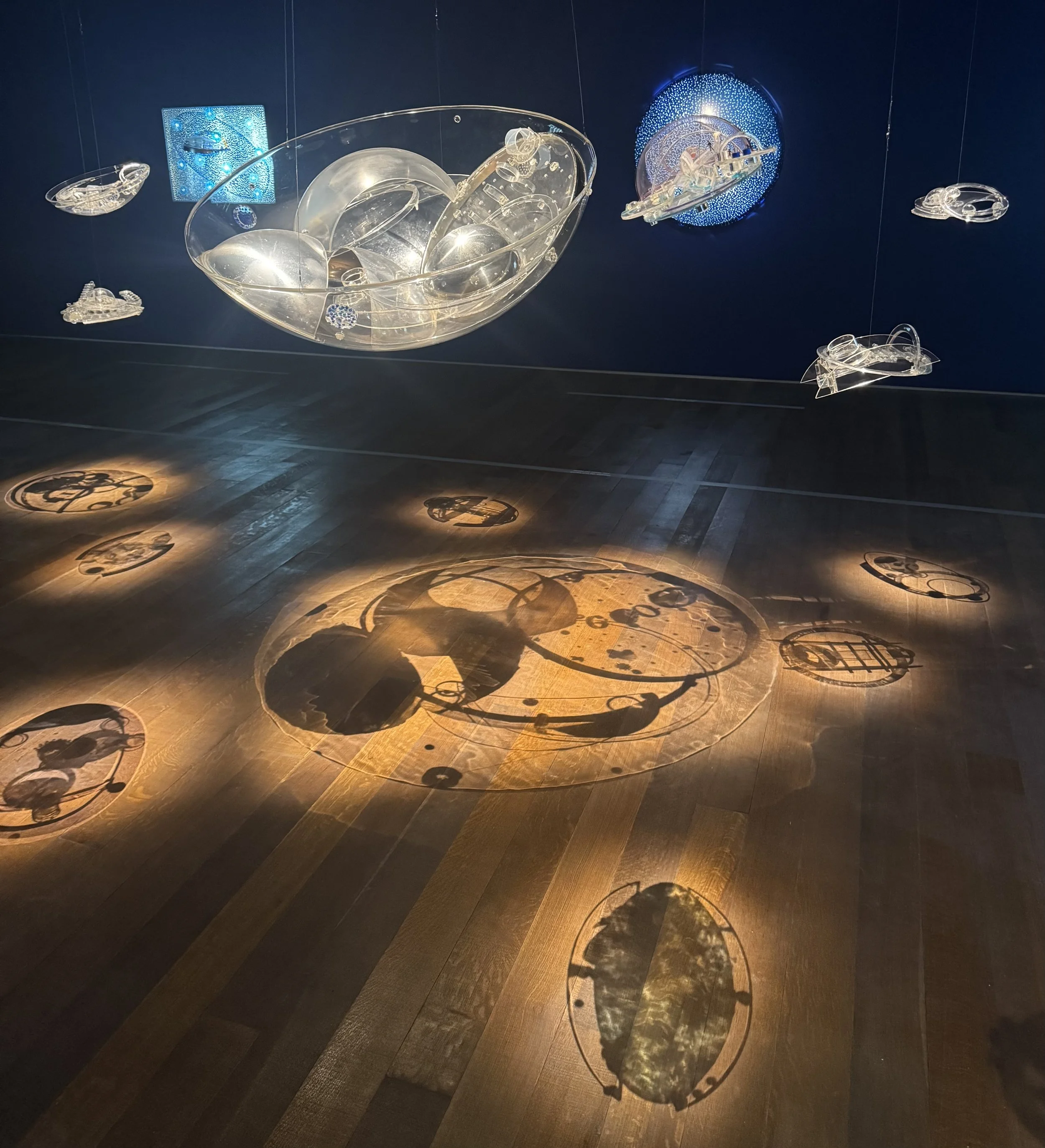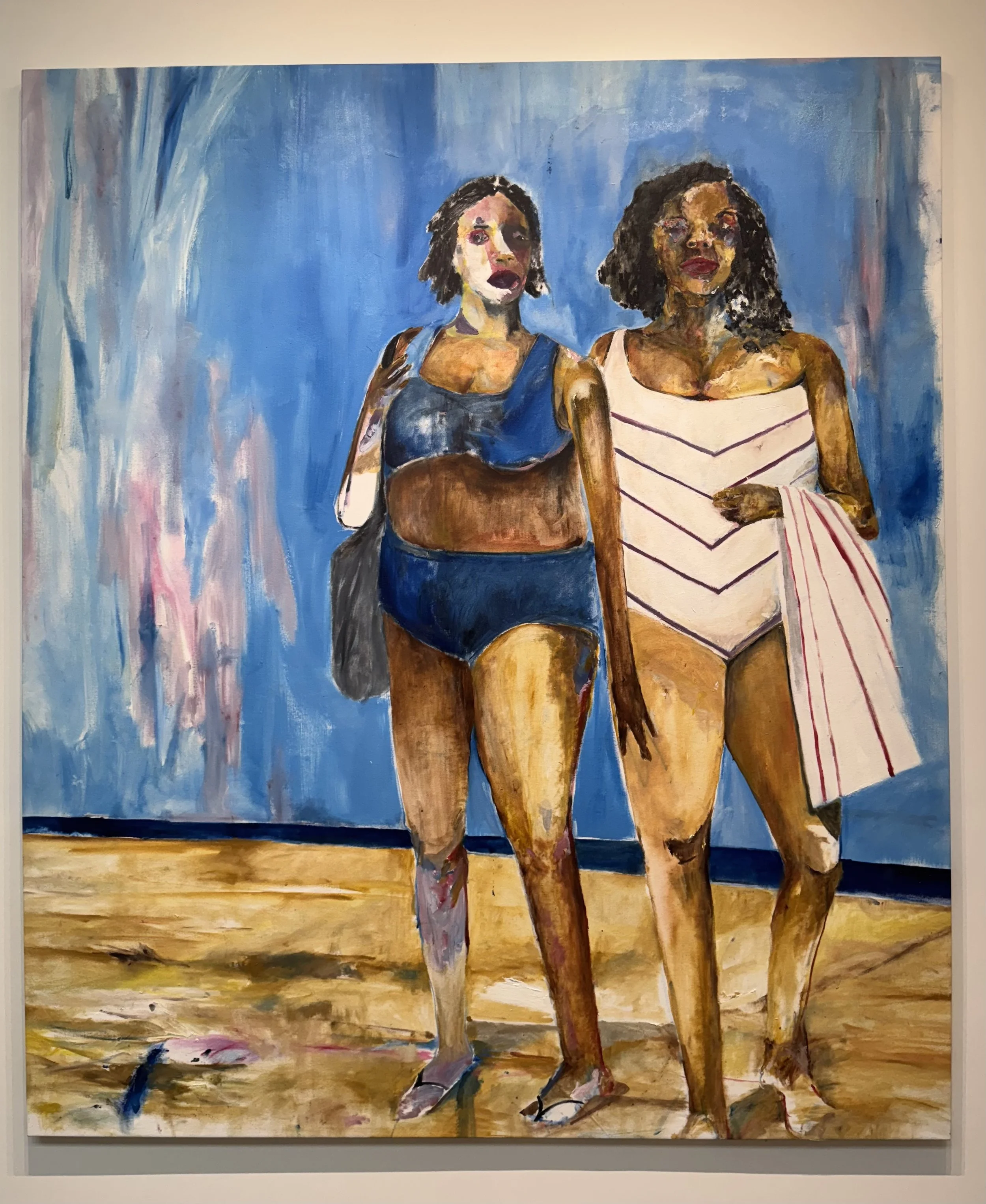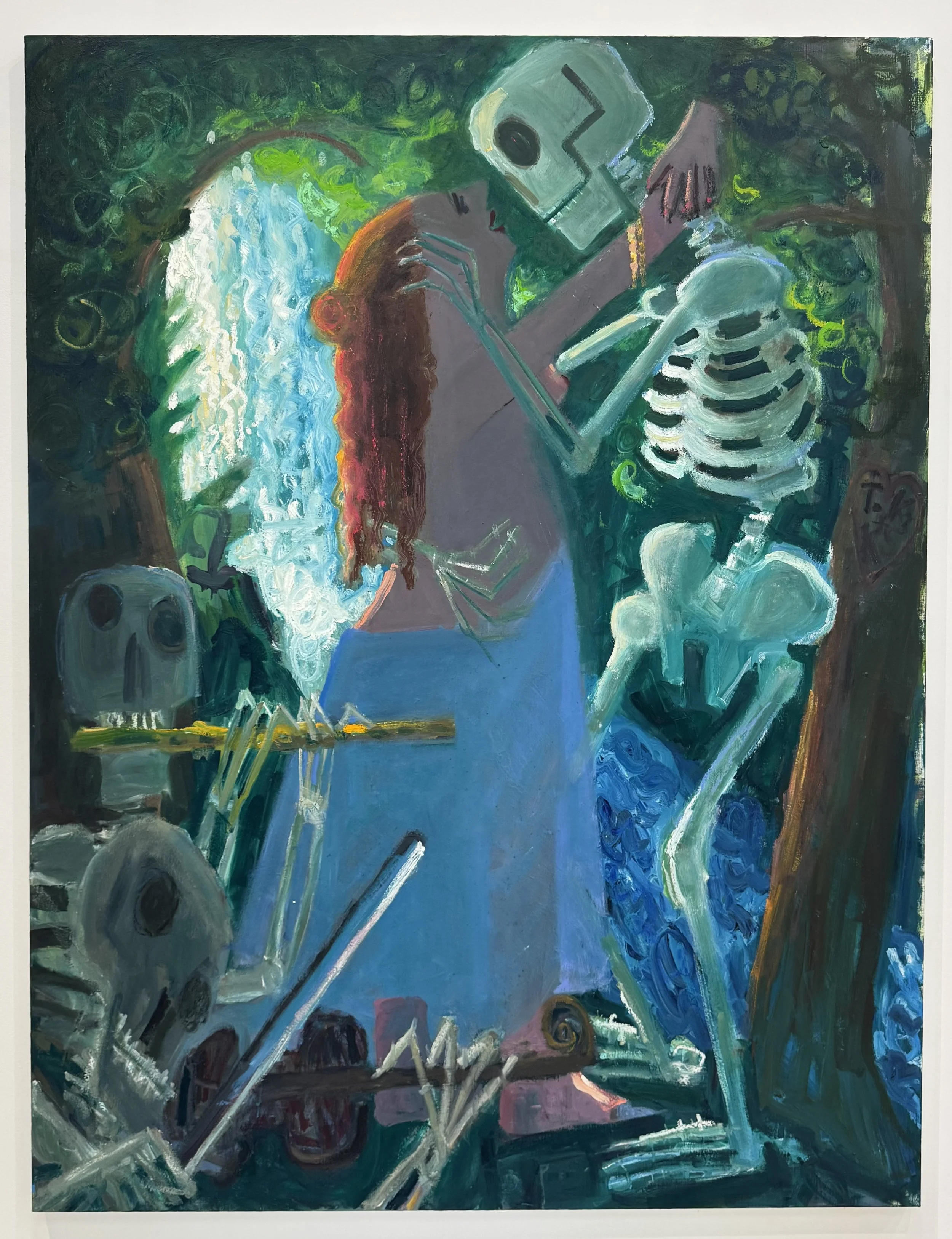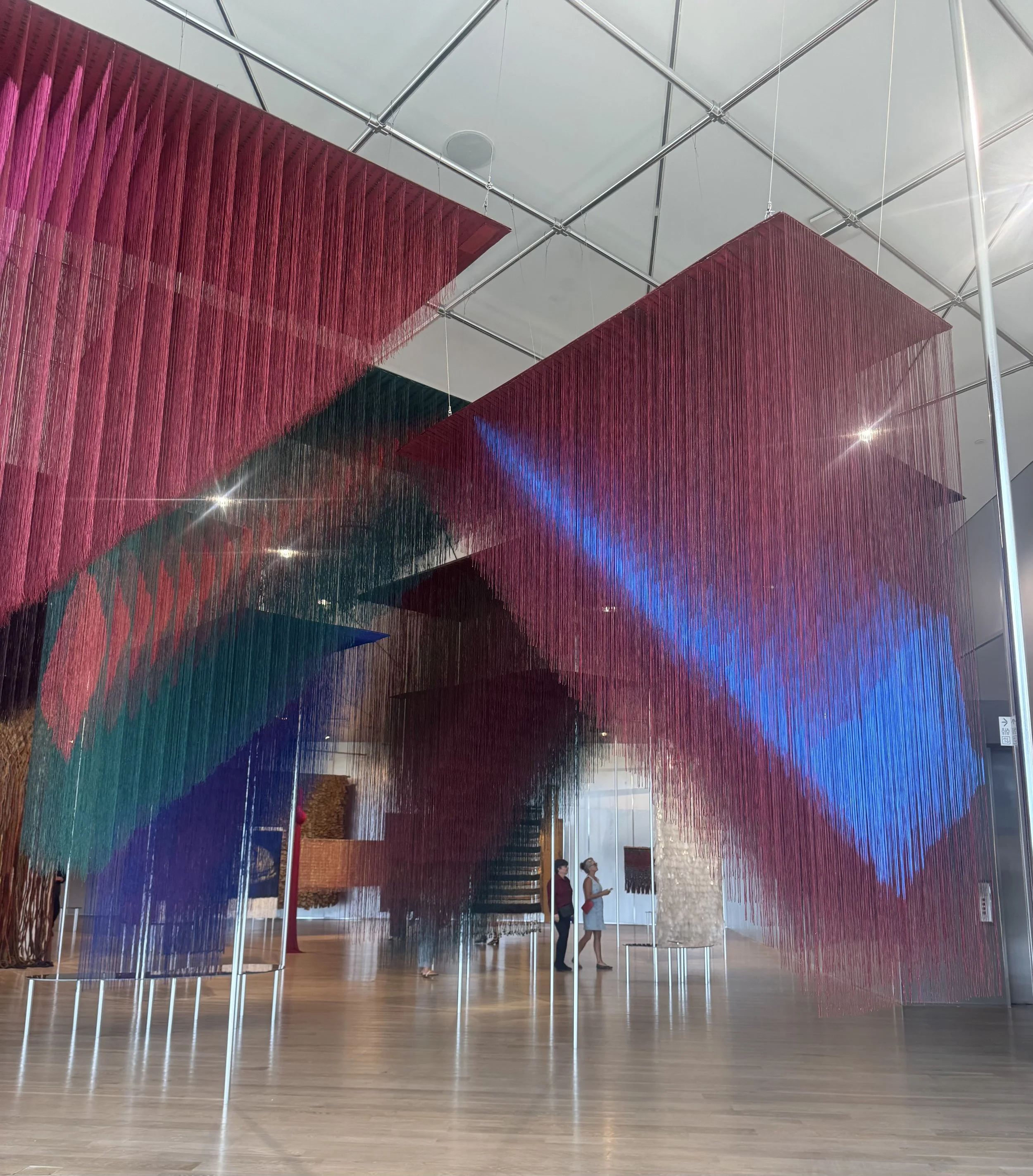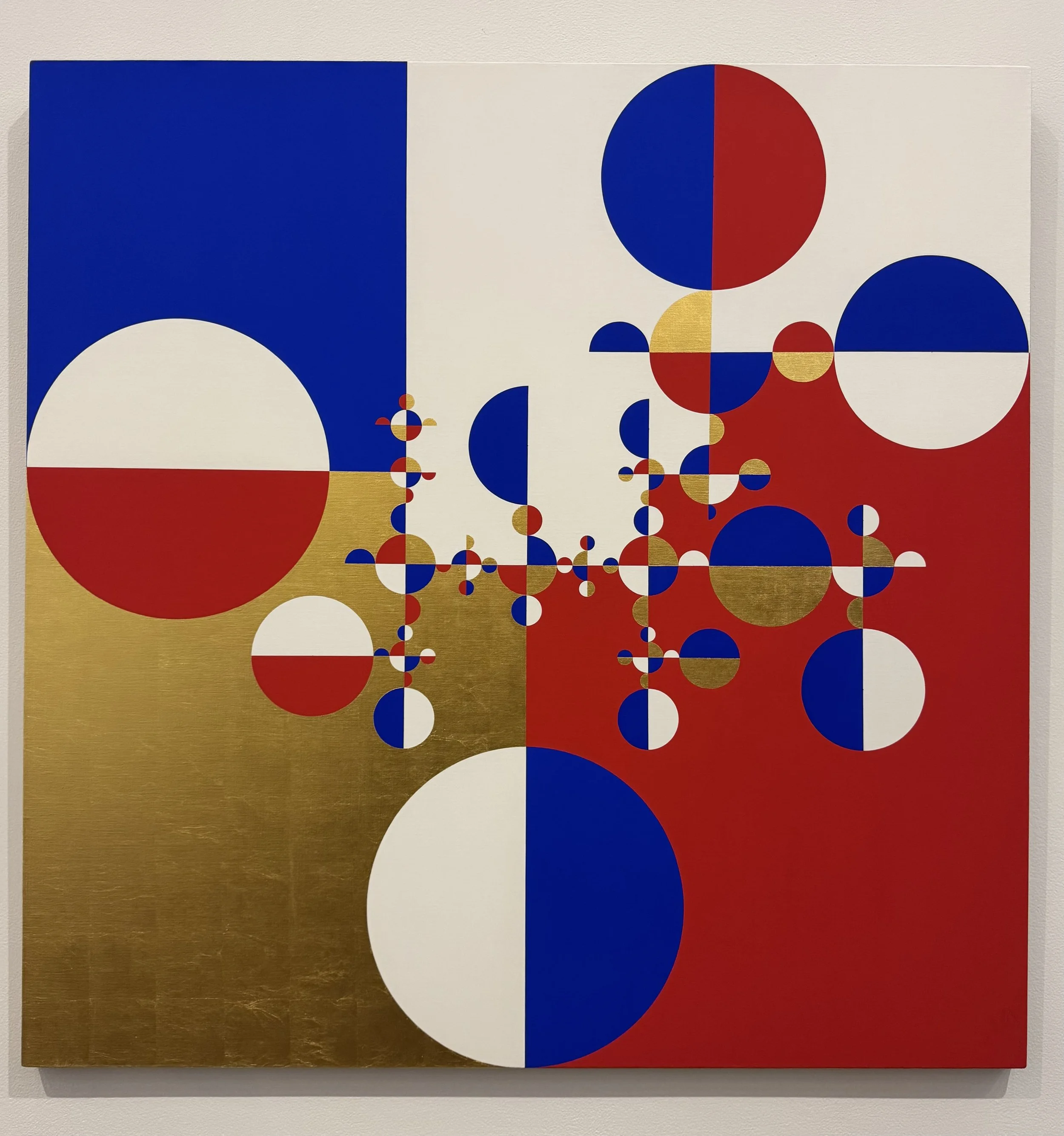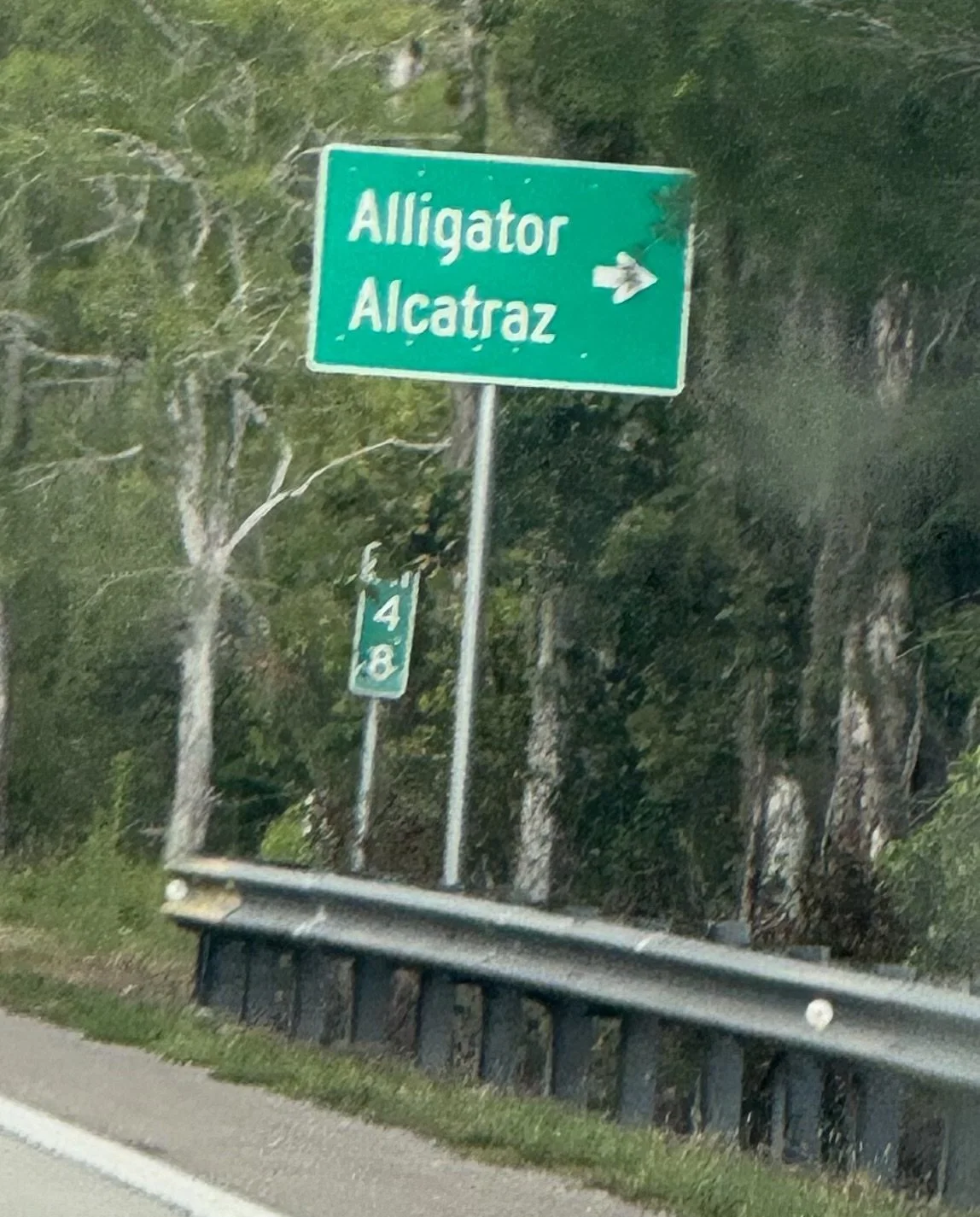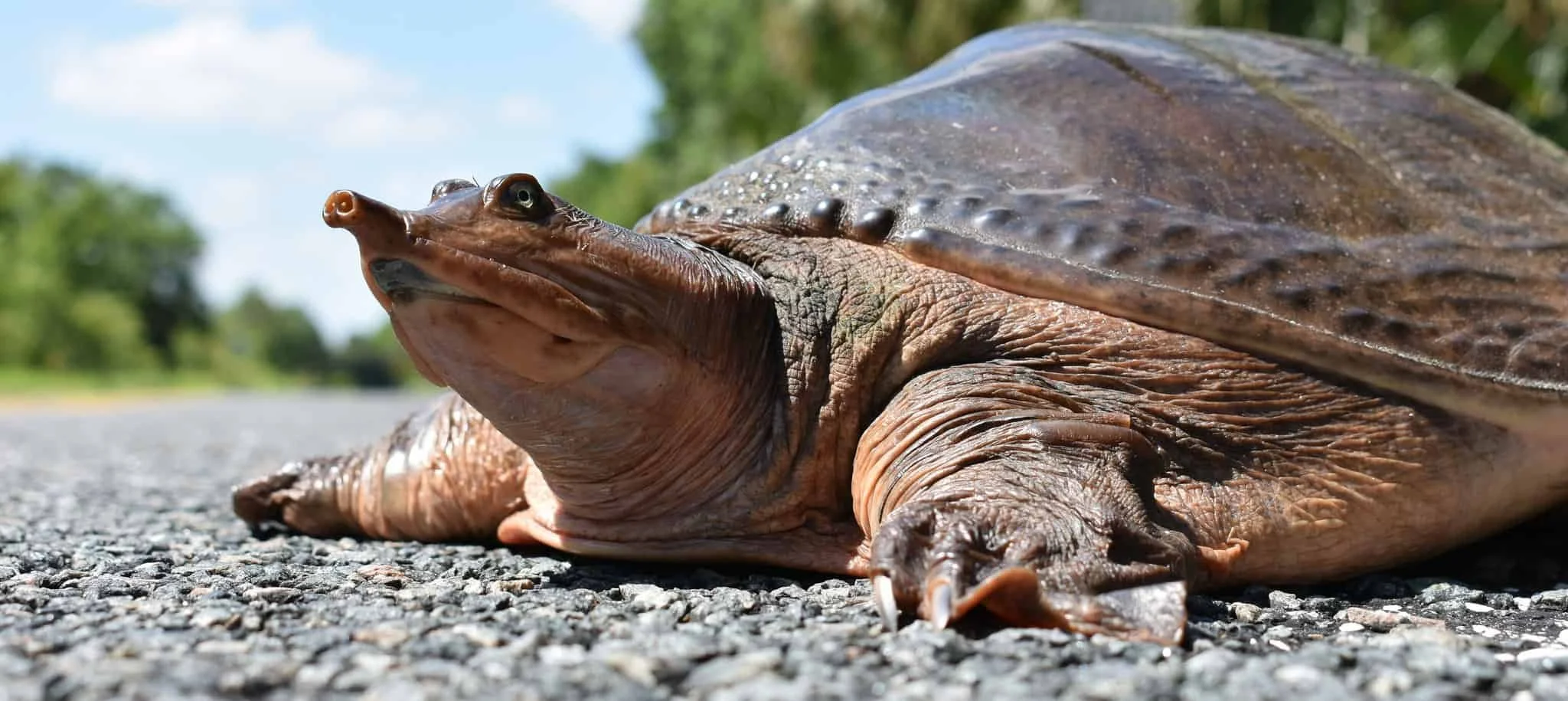A Turtle Near Alligator Alcatraz
All things are interconnected in life, art, and the Universe.
Yet whether you read this newsletter or not, these do not matter.
In typical fashion for Charting Transcendence, I’ll explain this paradox of interconnectedness by weaving in threads about art, music, and philosophy.
(Those only interested in the story about the turtle or what I think about Alligator Alcatraz may scroll towards the end.)
NOTE: This edition of Charting Transcendence’s newsletter incorporates the lyrics of Philip Glass’s Symphony No. 5, “Requiem, Bardo, Nirmanakaya.” (1999), whose libretto pulls heavily from Eastern religion and philosophy. This is the album cover of a release of the 2000 recording made by the Vienna Radio Symphony Orchestra conducted by Dennis Russell Davies (b. 1944), which quotes the opening verses of the Rig Veda.
Come or Do Not Come: The Paradox of Presence
Kour Pour (b. 1987) Birth Chart (Finding My Way Home) (2024), shown earlier this year at Nazarian / Curcio in Los Angeles. Art of the Persian diaspora is always a treat to experience in the metropolis containing the largest concentration of Persians outside of Tehran.
Los Angeles is a regular stop on CT’s art-tour circuit for good reason: apart from New York, no city in North America rivals its abundance of world-class art — and I’ll be back there next week — July 23–26 to engage with its best exhibitions of the year.
Now, in my experience, it can be a bit of a challenge to convince many Angelenos (comfortable in their bubbles) to venture out of their homes to art galleries, even as many of these are truly gardens of earthly delights when it comes to the spectrum of contemporary art available today.
This conundrum underscores a deeper truth about presence, for the orchard (a fruit-bearing garden, which in Persian mysticism represents spiritual growth, divine love, and the interconnectedness of all things) holds immense beauty whether we engage with it or not.
But its meaning transforms through presence: the "light and wine" (art’s transcendence) only resonates when we choose to seek it.
So, come or do not come — paradox notwithstanding — a treasure trove of art in LA remains. I’ll be enjoying it regardless.
What shifts if you DO come? There’s only one way to know.
I have limited availability for tours, but I’ll try to accommodate those who reach out — please reply if you’d like to join the search.
Miami: The Universe’s Latest Draft
View of the new I-395 Miami Signature Bridge, a complex construction project set to impact Miami’s skyline and traffic for generations to come, as seen from the plaza outside the Perez Art Museum Miami.
There was neither non-existence nor existence then;
there was neither realm of space nor the sky which is beyond.
What stirred? Where? In whose protection? Was there water bottomlessly deep?
…
Poets seeking in their heart with wisdom found the bond of existence in non-existence.
– Rig Veda (Indian religious text, 2nd millenium BCE)
Lately, I’ve been spending more time at home in "The Magic City," which certainly lives up to its name, not just for its artsy glitter and sex appeal, but for its relentless, almost alchemical reinvention.
As I strolled through downtown last week, the scale of transformation felt visceral: cranes towering over the new I-395 Signature Bridge, the first phase of the Miami Worldcenter opening its doors, reshaping vast swaths of valuable real estate.
Reflecting on the Rig Veda, the oldest of ancient Indian religious texts, offers important perspective. Its verses suggest universes cycling endlessly with no beginning and no end.
Applying this wisdom, it occurred to me that the dozens skyscrapers currently under construction here (more than any U.S. city apart from New York) aren’t just feats of engineering — they’re stardust rearranging itself into the universe’s latest draft.
Before this Miami, there was some other version of it here — or elsewhere in the cosmos — and after this one fades, another will form. Yet our human timelines can hardly grasp such infinity.
This city’s energy, including its art hubs, its collisions of wealth and wilderness, feels uniquely chaotic in the moment. But cosmically? It’s a recurring pattern.
Complexities like Miami have always existed across infinite time and space. Art captures this truth.
That’s why Charting Transcendence is rooted here. Miami, in all its fleeting glory, reminds us: transcendence lies in seeing the infinite within the now.
Mildred Thompson (1936-2003) was an outstanding African-American artist, overlooked for many years, whose career is currently enjoying a retrospective entitled Frequencies at the Institute of Contemporary Art Miami.
The massive Miami Worldcenter’s new public art installations include this vintage 1930s globe, originally installed at Pan American Airways’ seaplane terminal in Biscayne Bay, restored by artist Franz Ackermann (b. 1963) and a mural by Nina Chanel Abney (b. 1982).
Denise Treizman (b. 1979) is a Miami-based artist who has earned institutional recognition for a unique body of work incorporating colorful, commercially ubiquitous materials into messy-looking elastic sculptures. Her practice, based in Little Haiti’s Laundromat Art Space, also encompasses drawing and ceramics.
Another public sculpture entitled Undom Endgle (Undom Endgle and the Mound Meat Cycle) (2022) by Trenton Doyle Hancock (b. 1974) at Miami Worldcenter.
Rubem Valentim (1922-1991) was a self-taught Afro-Brazilian artist whose work has been quite visible recently in Miami institutions such as the Perez Art Museum Miami given the contemporary taste for geometric abstraction.
Ugandan artist Sanaa Gateja (b. 1950), represented by New York’s Karma Gallery, has created an unusual body of art made out of pieces of paper bead jewelry woven together to form textured images mounted on barkcloth. Several of these are currently on display at the ICA Miami.
Baker—Hall gallery recently showed work geometrically-abstract textile art by Cuban-born artist Alexis Oliva (b. 1973).
Channeling the spirit of the Jetsons, Gyula Kosice’s (1924-2016) Intergalactic is a museum show at Perez Art Museum Miami that’s almost literally out of this world.
Jared McGriff (b. 1977) has been a popular choice among South Florida collectors of Black figuration for several years. This painting of his appears in El Espacio 23’s annual show Mirror of the Mind: Figuration in the Jorge M. Pérez Collection.
Death and the Maiden (2023), a painting by Kyle Staver (b. 1953) recently exhibited at Miami’s Andrew Reed Gallery.
Still a must-see for anyone in Miami this summer (until Oct. 12) at the Institute for Contemporary Art is this immense show of tapestry by the grande dame of Latin American textile artists, Olga de Amaral (1932).
Circles, representing the artist’s way of thinking and the migratory nature of life, are the most enduring motif in the oeuvre of Mexico’s most internationally celebrated artist, Gabriel Orozco (b. 1962). This painting, Samurai Tree (Invariant 26O) (2020-21) is in the collection of PAMM.
How I Helped a Turtle Cross the Highway Near Alligator Alcatraz
This brand-new DOT-approved sign appeared just a few weeks ago along a rural route that I regularly frequent in crossing Florida.
May I be protector for those without one,
a guide for all travelers on the way;
a bridge, a boat and a ship
for all who wish to cross the water.
— A prayer by Shantideva (685-673) in the Bodhisattvacaryāvatāra (“The Theory of Mouth and Bodhisattva”) ca. 8th century CE
And now, for a deeper and more personal demonstration of the interconnectedness of all things.
I’ve been having very strong feelings about the fact that, barely three weeks ago, a place appeared out of nowhere alongside a rural highway through the Everglades connecting Miami with Marco Island and Naples.
Meanwhile, I’ve been digging towards a profound art experience through poetry and music.
Those of you who have been following along will know that I’m a passionate fan of Philip Glass (b. 1937). Over the last seven years, I’ve listened to his Symphony No. 5 “Requiem, Bardo, Nirmanakaya” (1999), a 100 minute-long behemoth of contemporary classical music, dozens of times, finding myself gradually drawn in more and more, even as I’ve tended to agree with critics who cite its surplus of grandiosity and repetition.
A month ago, I tuned in to Glass’s Fifth again. Over the following weeks, as I began to create consciousness through the libretto (i.e. the words the music is set to), an epiphany unfolded.
A choral symphony like Beethoven’s Ninth (1824) — or more appropriately an oratorio like Haydn’s The Creation (1799) or The Seasons (1801) — Glass’s Fifth is scored for 200+ musicians and singers, weaving Buddhist texts, Rumi, and Mayan prayers into an epic, over-the-top journey through the history of the Universe.
Yet as I dug deeper into the symphony in recent weeks, I learned that Glass, a Buddhist, actually wrote the libretto first — before writing a single note — allowing for a deep interconnectedness throughout its musical architecture.
Florida softshell turtles (like the one I helped) are among Everglades wildlife at greater risk due to the impact of the recent opening of Alligator Alcatraz along a rural stretch of US-41.
Then, a few days ago, as I was driving down US-41 — something that I’ve likewise done dozens of times over the past seven years — I passed by the entrance to "Alligator Alcatraz," where migrant detentions have stirred controversy both locally and nationally.
A mile or two later, I spotted (at 65 miles per hour) a very large turtle struggling vulnerably and deliberately across the highway.
Instantly, Shantideva’s prayer ("May I be a protector for those without one") from the final movement of Glass’s Fifth sprang out of my head, as if this music were guiding me across a cord of consciousness stretching from art to concept to action.
I quickly pulled over and (as they say in Miami) got down from the car. Fortunately, there were no other cars in sight, and I rushed over to pick up the turtle.
In the moment, this rather hefty, two-foot-wide Everglades dweller didn’t seem too pleased with my intervention as he squirmed his head and flapped his feet.
I then carried him across the road, placed him safely in the lush grass, and raced back to my car to continue on my way.


